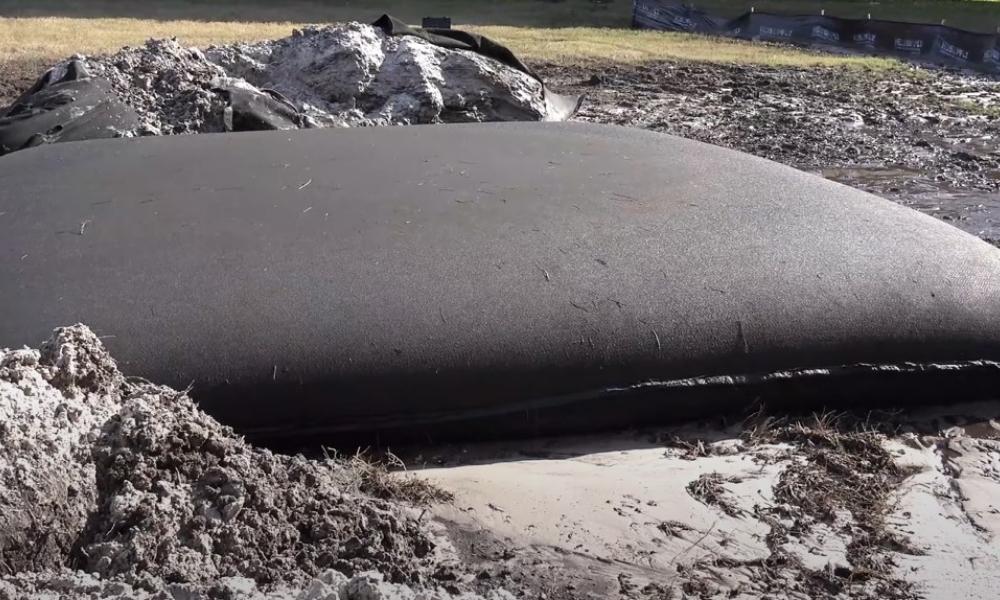Silt bags are dewatering items composed of geotextile materials. Dewatering is the process of removing water from a construction site using water pumps. If a site has already been flooded, the water may need to be drained before excavation or building can begin.
filter bags help building locations comply with tight storm water restrictions by preventing silt from flowing through.
Using filter bags to filter sediment and other particles from water. When you utilize silt or filter bag, water passes through them and traps the sediment within. Wastewater treatment plants can also employ silt bags.
Applications of a Silt Bag
Silt bags filter water and can be utilized in construction sites, wastewater treatment facilities, and any other job site where sediment must be managed. To reduce the quantity of silt transported into lakes, rivers, and streams, erosion mitigation around building sites is required.
filter bags are filtration items that are used to remove sediments, silt, and detritus from stormwater outflow, ponds, and ditches. These bags, which are made of high-level filtration textiles, have been used to retain and filter silt on building sites and dredging regions. Dewatering bags come in a variety of sizes, ranging from 1 to 15 cubic yards of material. The following are some of the features:
- Fits Dump Trucks, Trailers, and Transport Vehicles
- Custom and Standard Sizing
- Geotextile Filter Fabric
Because silt can transport chemicals that are harmful to animals, it’s critical to control sediment migration wherever feasible. Silt bags will assist safeguard adjacent animals, bodies of water, and natural resources when used at building sites.
At construction projects, coir mats, logs, or nets can be used in conjunction with silt bags. The capacity of coconut coir fibers to retain and absorb water is unrivaled.
Just after sediment is removed by the silt bag, the water is absorbed by coir mats or logs for use by the surrounding flora. Sediment-free water can then be absorbed into the soil or discharged into a storm drain.
Furthermore, the coir mats, logs, and nettings keep the soil in place, prohibiting the filtered water from driving it away. Natural fibre products are environmentally relatively harmless and recyclable, and as they degrade, they contribute critical nutrients to the soil. They are completely organic and do not produce any trash.
Tips on How to Use a Silt Bag
When utilizing silt bags for erosion control, assess the area ahead of time to see how you can protect the soil and neighboring plants. To prevent further erosion, you should fortify and preserve the area.
Rather of throwing away the silt bag’s contents, you may use them to help maintain and preserve the area, as long as they don’t include any toxins or hazardous components. Regularly examine the silt bags for clogs or other issues, and replace them as needed.
If you need to drain water out of a building site, silt bags are a great way to prevent erosion and debris movement. The use of silt bags for land reclamation is ecologically beneficial and allows construction to continue without harming current plants or soil.
Benefits of Using a Slit Bag

1. Cost Effective
In contrast to eliminating wasted packaging and labor expenses, a geotextile silt bag solution might save you money on disposal taxes and penalties. It can be costly if wet rubbish is not properly disposed of.
By eliminating the harshest part of moisture waste — the liquid – dewatering with silt bags reduces disposal costs significantly. Dewatering helps to significantly reduce the expenditure of disposal by eliminating the heaviest portion of wet waste, which is assessed by the entire quantity and mass of the wastes created.
The dewatered water may simply be disposed of somewhere safe and legal, such as a local canal or storm drain, saving you a lot of money on waste water disposal.
2. Environmentally friendly
Alternate dewatering techniques, such as centrifuges and belt presses, have a smaller environmental impact than silt bags. They don’t require any more water, and they don’t need any gas-powered equipment.
Additionally, the water you remove is typically put directly into municipal water streams or drainage systems, and the significant material you remove is usually recycled if it does not include hazardous ingredients.
3. Colors and Sizes May Be Customized to Meet Your Needs
Geotextile silt bags may be customized to fit your exact area and color scheme, depending on the situation. Irrespective of whether you desire a tiny or big dimension, as well as your color preference, your dewatering process will fit exactly within your specified limitations. Silt bags can even be piled to make the most of available space on the side.
4. It is Easy to Use
Based on the diameter of the dewatering bag/tube, just a few people are necessary to build up and operate a dewatering process employing a filter bag. You may swiftly unfold the bag and begin loading it with liquid by connecting a pump (or numerous pumps) to the load spouts.
Conclusion
Erosion is a prevalent issue on construction projects and big agricultural projects, and there are a variety of methods for controlling erosion on a broad scale. filter bags have been shown to be a successful method of erosion prevention on construction sites.
filter bags are commonly used to remove sediment, sand, and other materials from piped water. This can be used by landowners and businesses to protect their areas from stormwater, overflowing lakes, ponds, or rivers, and other water concerns.
Silt bags or filter bags provide various benefits that will help you to dewater a vast area for a reasonable cost and with very minimal time and energy. This blog post will show you how one should use silt bags for erosion management and provide you some pointers on how to use them properly.

